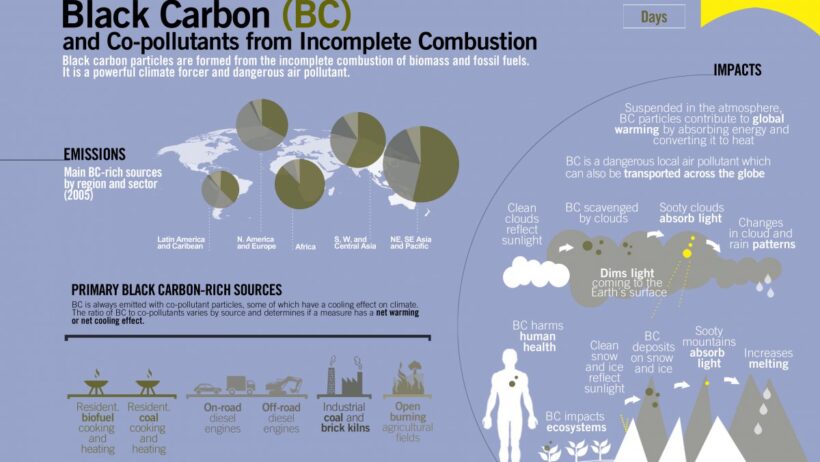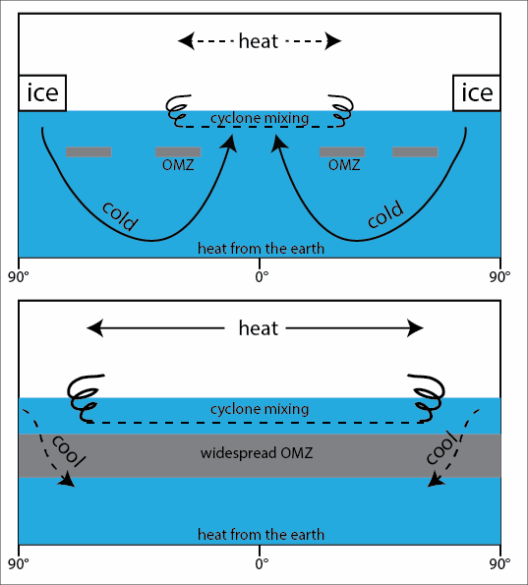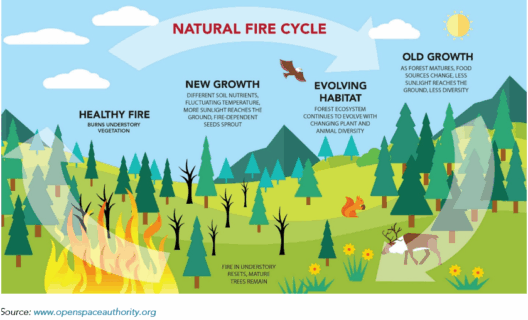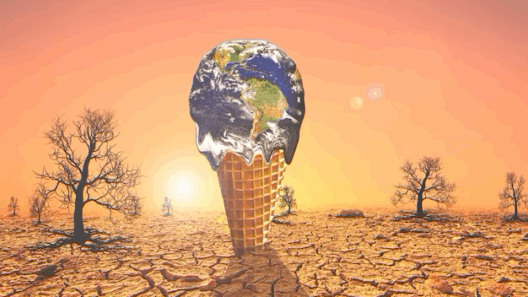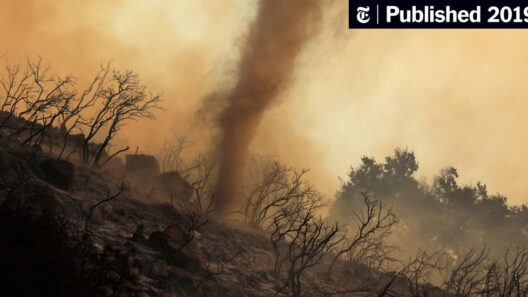Climate change remains an intransigent adversary of our time, influencing weather patterns, melting polar ice caps, and threatening biodiversity. Among the myriad contributors to this ongoing crisis, black carbon aerosols emerge as a critical yet often underappreciated factor. These microscopic particles, primarily produced through incomplete combustion of fossil fuels and biomass, have far-reaching implications for the planet’s temperature. This discussion elucidates the role of black carbon in exacerbating global warming and why understanding its effects is paramount.
Black carbon, more commonly known as soot, is formed when carbon-based fuels are burned. The combustion of wood, coal, and diesel emissions generates these pollutants, which are released into the atmosphere where they can linger for days to weeks. Once airborne, they can settle on snow and ice surfaces, significantly impacting the albedo effect—where light is reflected from Earth’s surfaces. A reduction in surface reflectivity due to darkening from black carbon can cause these surfaces to absorb more sunlight, inducing accelerated melting and further contributing to rising global temperatures.
To fully appreciate the implications of black carbon, we must first grasp its physical properties. These particles are generally less than one micrometer in diameter, which grants them the ability to penetrate deep into the lungs and the broader environment. The optical properties of black carbon distinguish it from other aerosols; it effectively absorbs sunlight, leading to a net warming effect on the atmosphere. This characteristic places black carbon into a unique category among climate forcers that includes greenhouse gases like carbon dioxide and methane, as well as other aerosols that might have cooling effects, such as sulfates.
The impact of black carbon on atmospheric temperatures is complex and multifaceted. Its capacity to absorb sunlight leads to warming in the troposphere (the lowest layer of the atmosphere) while simultaneously contributing to the cooling of the stratosphere (the layer above). This dichotomy complicates assessments of its overall effect on climate, as the warming at one level may influence weather patterns in unpredictable ways. Moreover, black carbon can also serve as a nucleus for cloud formation, impacting precipitation patterns and further complicating our understanding of its climatic repercussions.
Research indicates that global warming potential (GWP) of black carbon is significantly higher than that of CO2 on a per-molecule basis. Over a short-term horizon, the GWP can be considered as 1,000 times greater than that of carbon dioxide, highlighting the urgent need to address black carbon emissions. To grasp the magnitudes involved, whereas CO2 can linger in the atmosphere for centuries, black carbon’s shorter atmospheric lifetime grants it a unique role as a mitigative target for immediate climate benefits.
Fortunately, there are actionable pathways to mitigate black carbon emissions. Transitioning from high-emission fuels to cleaner alternatives represents a foundational approach. For instance, replacing traditional cookstoves with more efficient, cleaner-burning technologies can dramatically reduce black carbon output in households across developing regions. Similarly, industrial sectors can implement technologies to capture and minimize emissions from combustion processes. Urban transportation systems can shift to electric or hybrid vehicles that drastically reduce or eliminate black carbon emissions.
These approaches underscore the potential for immediate climate action that reduces black carbon emissions and subsequently warms the planet at a quicker rate than greenhouse gases alone. Conversely, neglecting this component of atmospheric pollutants risks missing the broader narrative of climate action. While the primary discourse often revolves around carbon dioxide reduction, the immediacy of black carbon removal provides a rarely recognized yet powerful avenue for climate progress.
Moreover, tackling black carbon emissions may yield co-benefits beyond climate mitigation. Fewer emissions would result in improved air quality, directly correlating with public health benefits, particularly in urban environments. Expediting the elimination of this pollutant not only fulfills climate objectives but also enhances the quality of life for individuals living in pollution-dense regions. Such dual-purpose strategies invariably increase the feasibility of implementation as they align with broader societal goals, dovetailing economic incentives with moral imperatives.
Nonetheless, a comprehensive approach to regulating black carbon emissions remains fraught with challenges. Policy frameworks that remain focused solely on carbon dioxide emissions often overlook these immediate climate contributors. Therefore, communication and education become pivotal in advancing understanding beyond traditional boundaries. Increased awareness about black carbon’s role can catalyze support for targeted policies and interest in cleaner technologies, forging stronger links between climate science and social responsibility.
In conclusion, black carbon serves as an insidious accelerator of global warming, necessitating urgent attention and action. Its unique properties and dire consequences offer both an ominous warning and a remarkable opportunity for mitigating climate change. As societies strive to address the multifaceted challenges posed by climate change, integrating black carbon strategies into the broader discourse can prove pivotal. The science is clear, yet the solutions lie within our collective grasp, waiting to be enacted for a more sustainable future. To navigate the tumultuous waters of climate change, our understanding must expand to encompass both the visible and the invisible—embracing all factors catalyzing our planet’s warming trajectory. Only then can we chart a clearer path toward a balanced and resilient global ecosystem.



